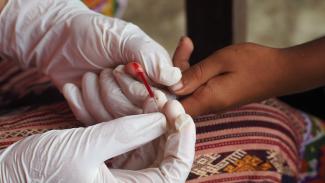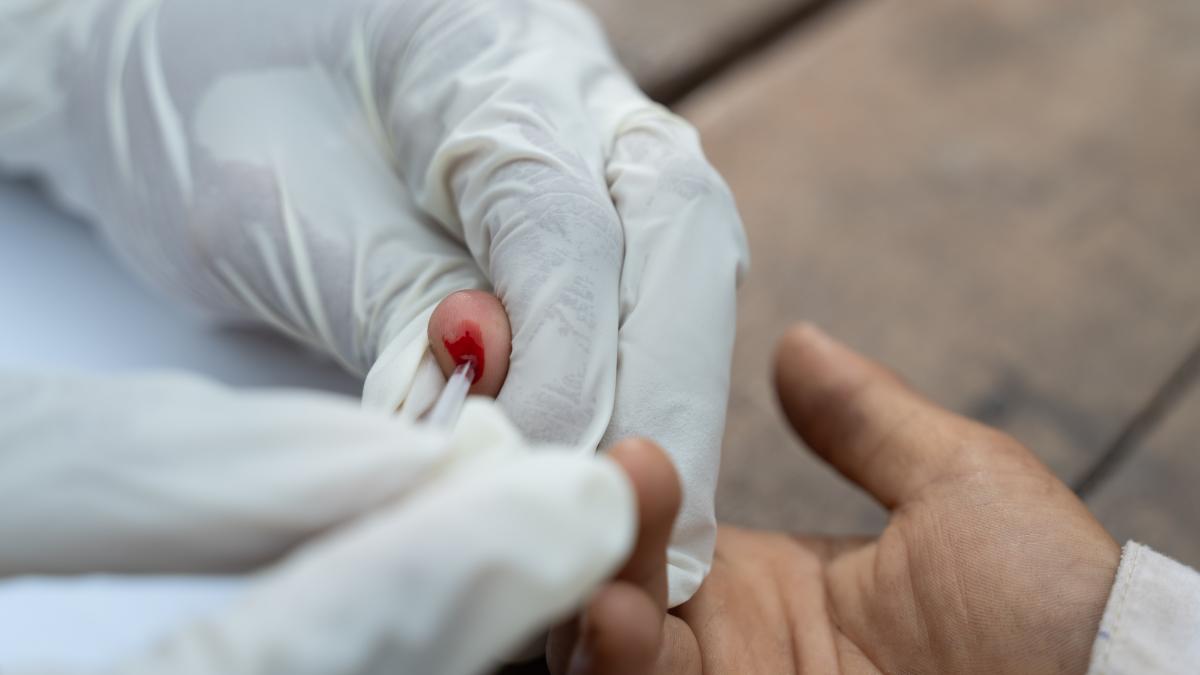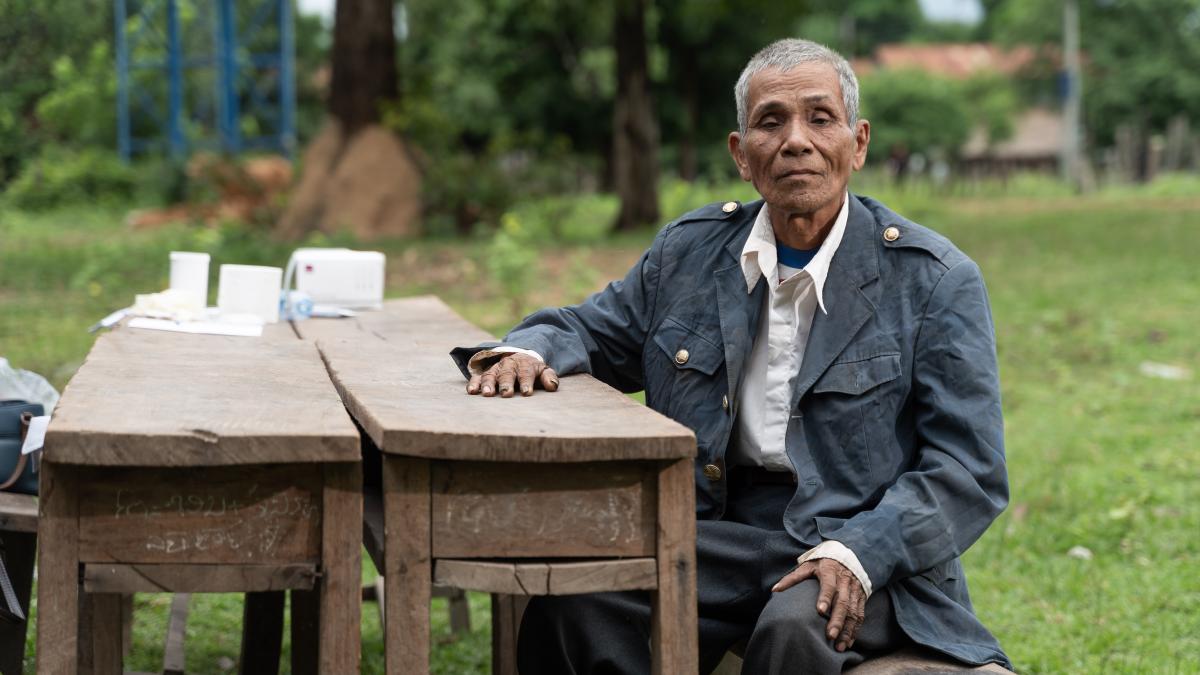I am just glad it's gone.
“If it hurt too much, I stayed home. It hurt so much I couldn’t walk or go anywhere. It got to the point where I could only cry.” - Mr. Bounsom Lokxayyalueb recalled his painful experience living with lymphatic filariasis.
These infections, called acute attacks, can be debilitatingly painful and cause the condition to worsen over time.
When his pain was at its worst, Bounsom Lokxayyalueb, from Lao People’s Democratic Republic, could not work or even shower himself.
Now 73, Mr Lokxayyalueb caught lymphatic filariasis, a neglected tropical disease, from a mosquito bite. More than 36 million people globally are affected by this condition, more commonly called elephantiasis, which causes swelling of the extremities.
Severe pain, which started in his knee, kept him from farming to support his family of five children.

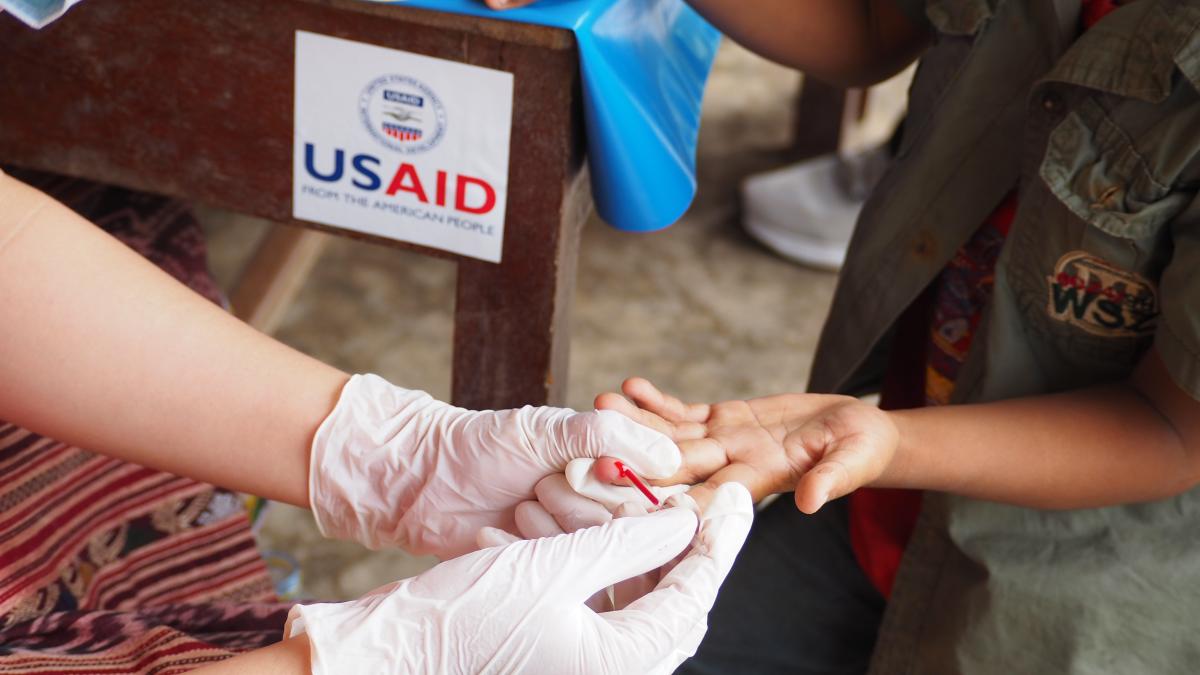

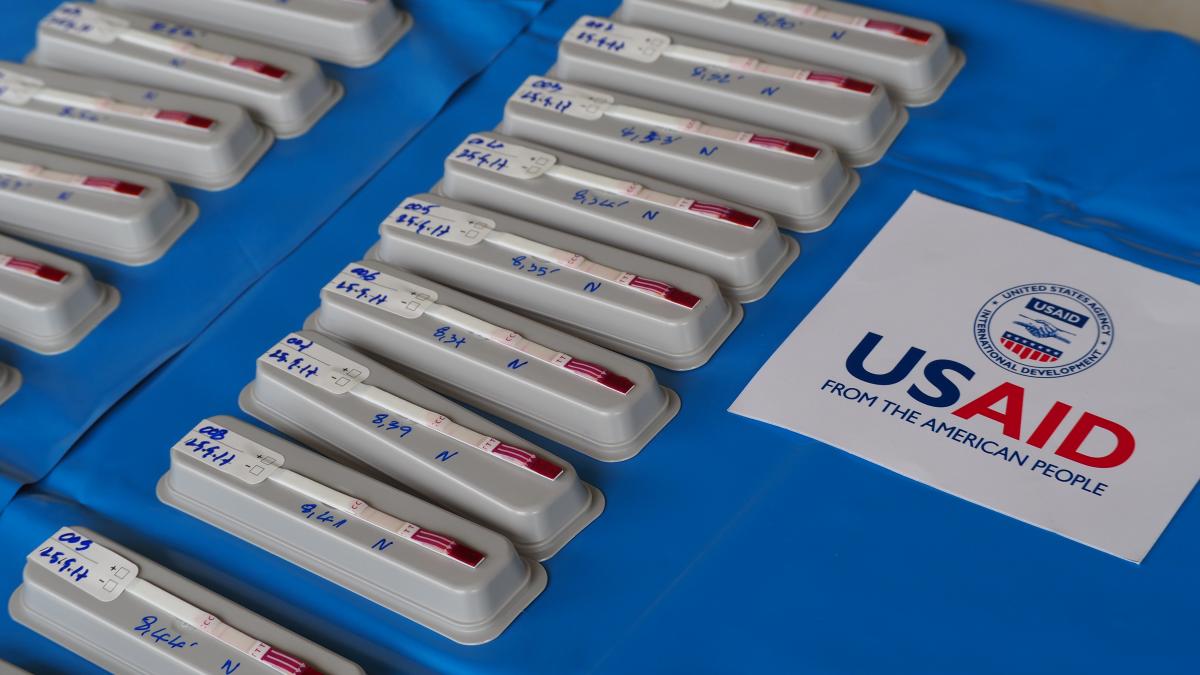
Blood collection and testing campaign supported by USAID
Photo credit: Athit Chanthalath/USAID Laos
Mr Lokxayyalueb was delighted by the news that Lao PDR has eliminated lymphatic filariasis as a public health problem. By eliminating LF as a public health problem, Laos has reduced the levels of the infection in the country to such low levels that it is expected to disappear even in the absence of further treatment. In this way future generations will be spared from this debilitating disease. Despite this incredible achievement, it is important to maintain health services for people like Mr. Lokxayyaleub who are already suffering from the irreversible consequences of chronic lymphatic filariasis.
While present in only one province (Attapeu) in recent decades, an assessment conducted in 2009 found lymphatic filariasis infections in up to 27.5% of village residents surveyed across several of Attapeu’s districts.
“I am happy that it is gone. I would love lymphatic filariasis to be eliminated because I don’t want anyone to get it like I did,” Mr Lokxayyalueb smiled as he told us how happy he was hearing the news.
Mr. Michael Ronning, USAID Laos Country Representative said, “The United States government congratulates Lao PDR for eliminating lymphatic filariasis as a public health problem. This accomplishment brings hope and enormous benefits to the Lao people now and in the future.” He added, “This is the second NTD that we have worked together with our Lao counterpart to end and we hope to continue to do so, improving the overall health of the people of Laos and saving lives.”
USAID, through partners, supported the government of Lao in mapping the extent of lymphatic filariasis, large-scale treatment programs, monitoring lymphatic filariasis disease, and documenting health successes.
By 2002, lymphatic filariasis was endemic only in Mr Lokxayyalueb’s home province of Attapeu. To eliminate it, local health authorities and partners gave preventive medication to communities who were at greatest risk.
Elimination work also benefited from activities to reduce malaria and dengue, including distribution of long-lasting insecticide-treated nets and health education programmes. Partners and donors supported activities including medication administration, monitoring and surveys to assess the disease’s spread.

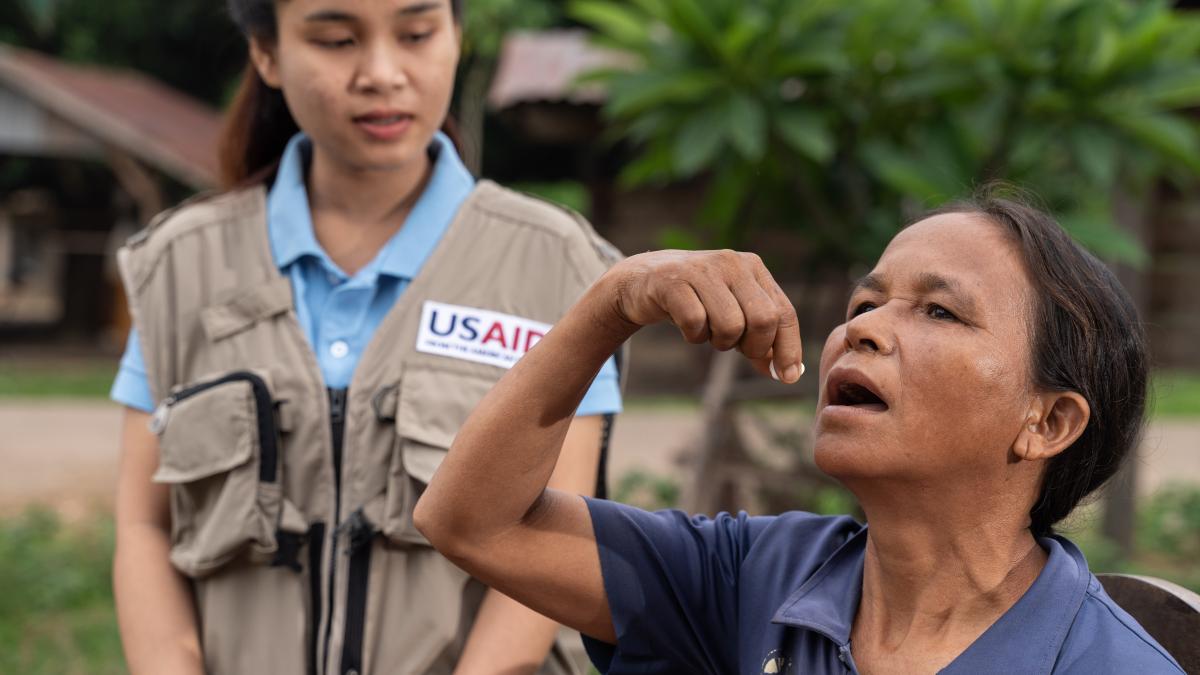
USAID-supported large scale treatment and mass drug administration contributed the successful elimination of lymphatic filariases in Lao PDR
Photo credit: WHO Laos
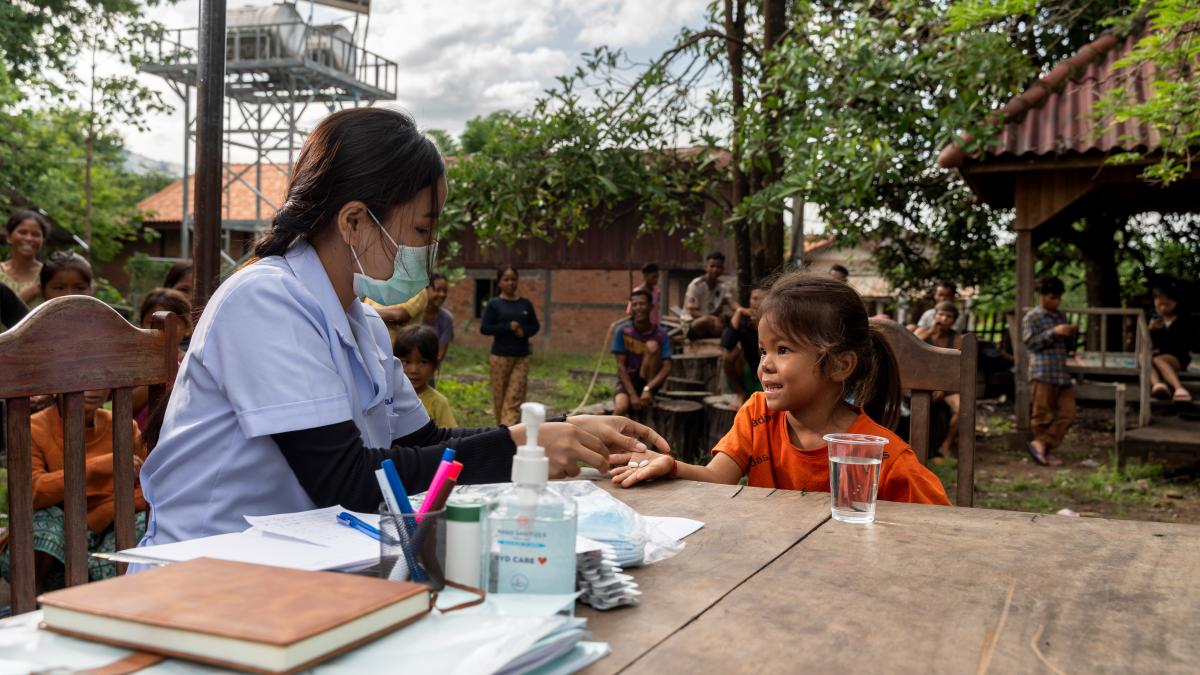
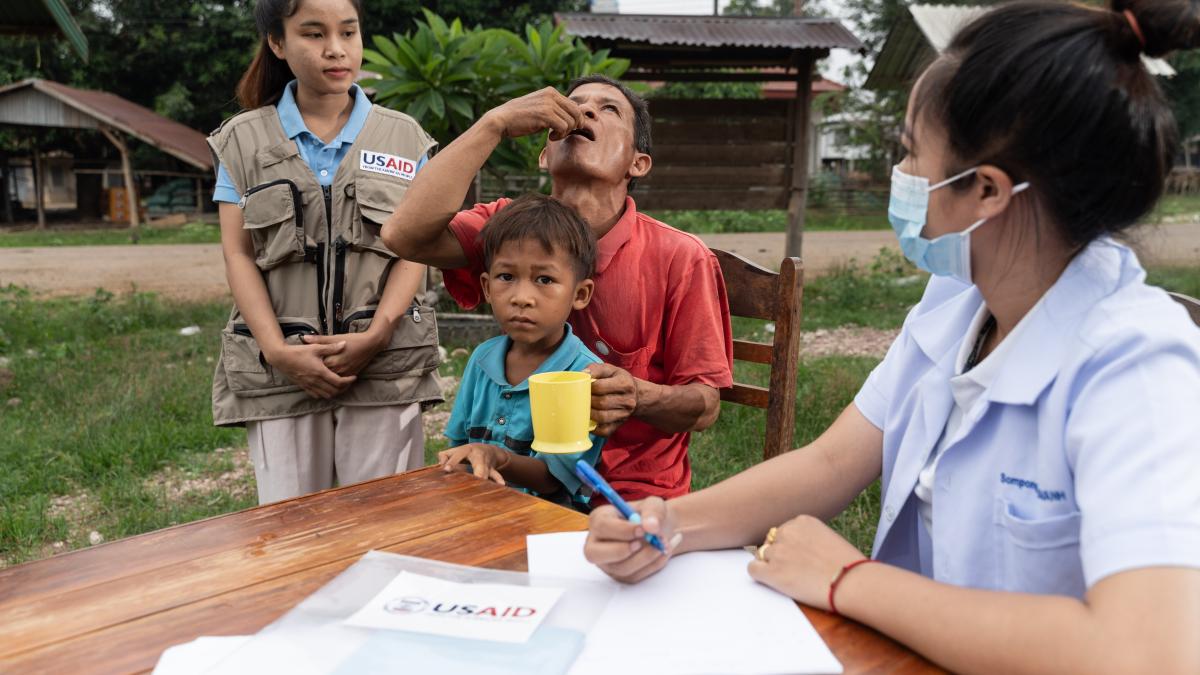
Villagers in Attapeu received lymphatic filariasis preventive drugs, during a USAID-supported mass drug administration campaign.
Photo credit: WHO Laos
Minister of Health Dr Bounfeng Phoummalaysith said, “We are delighted to celebrate this historic milestone and the end of a horrible disease in Lao PDR.”
WHO Representative to Lao PDR Dr Ying-Ru Lo said the major public health milestone was testament to the power of leadership and collective action in public health.
It followed years of collaboration by the Ministry of Health and health workers, WHO and partners, including USAID, the Asian Development Bank, the Margaret A. Cargill Foundation, Family Health International (FHI 360) and RTI International.
“I would like to extend my heartfelt congratulations to the Ministry of Health and local health workers for their tireless dedication to finding and caring for every last person with lymphatic filariasis, and stopping transmission of this terrible disease. “Achieving elimination of lymphatic filariasis is evidence of the remarkable impact that Lao PDR can have on public health with good investment and partnerships,” Dr Lo said.
Director of Sanamxay District Hospital Dr. Kham-In Kongkasan, 47, and his team had to overcome many challenges to protect the community.
“Lymphatic filariasis is not easy to treat and there were many cases in our district. We also had to control the disease to prevent it from spreading and affecting people’s health and household finances, because if someone is sick, they would have to spend quite an amount of time and money for treatment.”, said Dr. Kongkasan.
Lymphatic filariasis, commonly known as elephantiasis, causes the enlargement of body parts, often resulting in pain, severe disability, stigma and – economic hardship.
He continued, “There was one man we encountered who had been affected, which made his feet bigger as well as his testicles. This also affected his family because they had to spend money and time on the treatment.
As part of elimination work, Dr. Kongkasan and other health workers needed to educate people about the risks of lymphatic filariasis.
“Sometimes, when our staff visited villages and conducted health education activities, villagers didn’t understand the danger of the disease or the benefits of the medicine. We did our best to educate people.” He told us how pleased he is to play his role in this success. "I feel very proud to be able to help people and make our community and our country free from lymphatic filariasis. For our country to continue to develop, it is important for people to have good health and to be free from diseases, especially lymphatic filariasis, which is not easy to recover from."
Dr. Kongkasan sees his work in the community as contributing to the overall health and development of Lao PDR.
“People are at the centre of development. For a community to be developed, our people need to be healthy enough to be able to work to improve their quality of life, support their family and serve the community.”
Surveillance and awareness work must now continue, said Dr. Kongkasan, so health workers can respond quickly to any cases.
“One important thing is that people are aware. We must stay vigilant to prevent it from coming back. Just because we announce the elimination this year, it does not mean it is 100% gone and won’t be back. We have to continue monitoring and stay alert.”
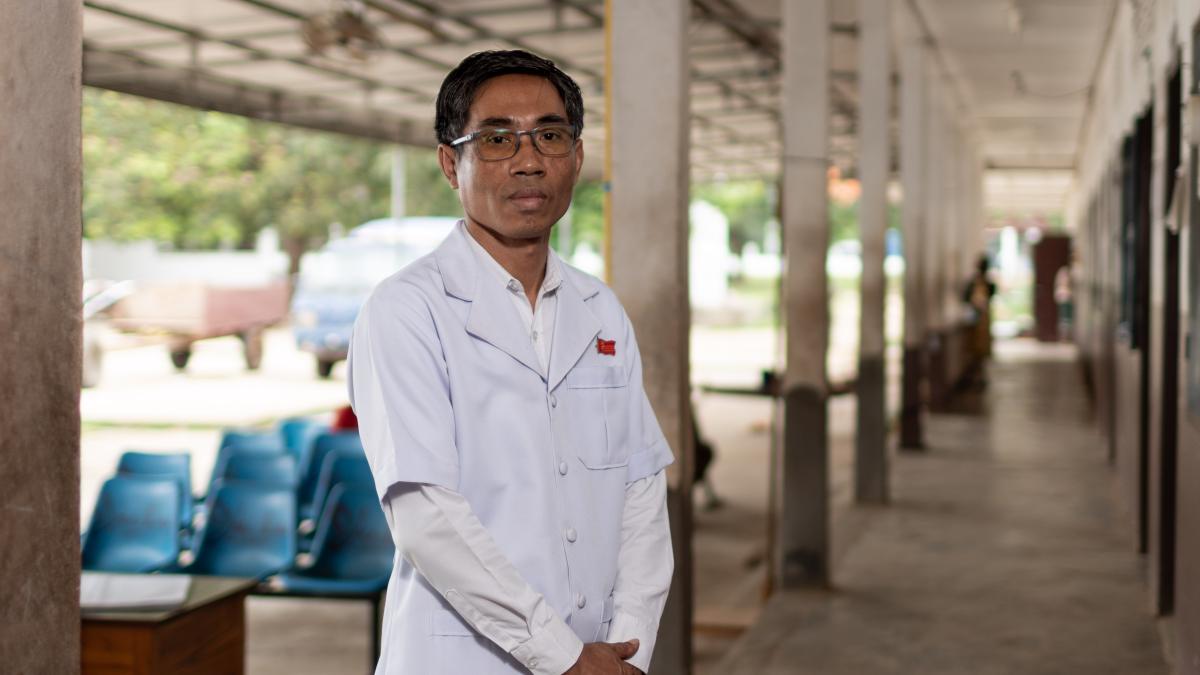
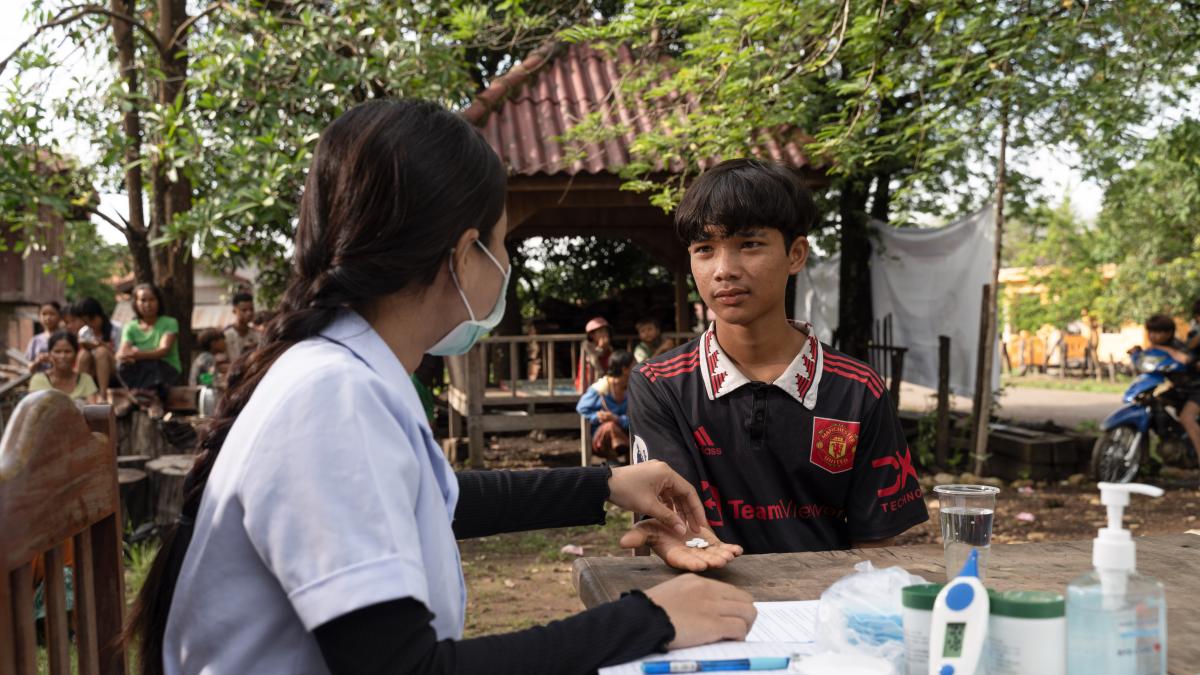
Our brave and tireless local doctors and nurses work hard to ensure everyone is safe from lymphatic filariases.
Photo credit: WHO Laos
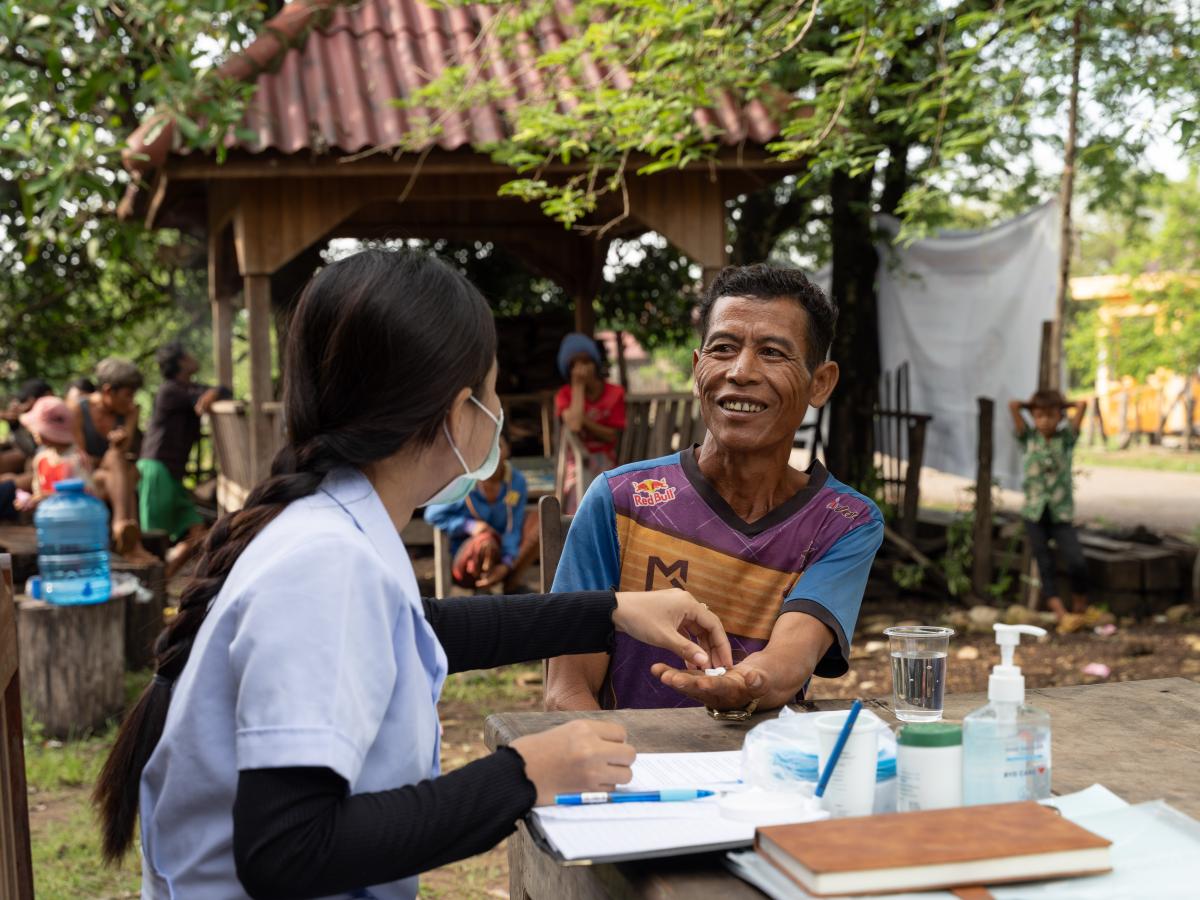
Doctor and nurses explain the importance of taking preventive medication.
Photo credit: WHO Laos

